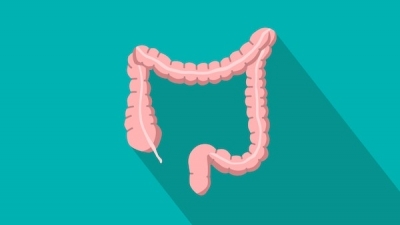Colorectal Cancers

Cancers arising from the rectum, which is the last part of the large intestine and large intestine. In our country, colon cancer is the second most common cancer in women and third in men.
Risk factors
Age: Although colon cancer and rectal cancer can occur at any age, the risk increases after 50 years of age. More than 90% of patients are people over the age of 50. After this age, the risk doubles every 10 years.
Family history: In 20% of patients, there is a family transition, but in the remaining 80%, there is no family history.
Diet and Environmental Factors: Fats, low fiber foods, alcohol, smoking, obesity and sedentary life increase the risk.
How Colorectal Cancers Occur?
Large bowel and rectum cancers occur when a group of cells in the bowel wall grow and turn into polyps and the polyp turns into cancer in the presence of various risk factors. Although most polyps are benign, some types may change over time and become cancer tissue. 95% of colorectal cancers develop from polyps. When they are detected, they are prevented from turning into cancer in the future by removing them endoscopically. In other words, colorectal cancers are 95% preventable cancers with screening programs.
Scanning
According to the recommendation of the World Health Organization, every person who is not in the increased risk group should be included in the screening program over 50 years old. Once a year, a stool occult blood test and an endoscopic examination should be performed every 5 years.
People with a family history of colorectal cancer or polyp should be included in the screening program from the age of 40 or 10 years before the diagnosis of the patient in the family.
Genetic tests should be applied to family members of people diagnosed with Familial Adenomatous Polyposis(FAP). Individuals who have negative genetic tests should be included in the screening program like those in normal risk group. Those who have positive genetic tests should be included in colonoscopic screening since adolescence. All of the large intestine should be removed by surgery since cancer will develop 100% in those with familial polyposis.
Women who have ovarian or uterine cancer before the age of sixty should undergo a colonoscopy every 5 years from the age of 40.
Symptoms
- A change in bowel habits, such as diarrhea, constipation, or narrowing of the stool, that lasts for more than a few days
- A feeling that you need to have a bowel movement that is not relieved by doing so
- Rectal bleeding: can be seen in many diseases involving the large intestine and rectum, but it should not be neglected as it is the most important finding of cancer.
- Dark stools, or blood in the stool
- Cramping or abdominal (belly) pain
- Weakness and fatigue
- Unintended weight loss
- Anemia-paleness: May be due to rectal red bleeding or unnoticed latent bleeding. Endoscopic examination should be performed, especially if anemia over 50 is detected.
Diagnosis
Physical examination: Cancers located in the last part of the rectum can be detected by finger examination.
Occult blood test in stool: About half of cancers bleed enough to be positive in the test. If it is negative, further investigations should be done if there is doubt.
Endoscopy: The procedure of examining the entire large intestine is called colonoscopy, and the examination of the last 60 cm part is called rectosigmoidoscopy. In addition to seeing the lesion during this examination, if necessary, a biopsy can be performed. Also, polyps can be removed.
Virtual colonoscopy: After bowel cleansing, the large intestine is inflated with air and images are taken with MRI or CT and combined in a computer environment in 3D. Polyp and cancer suspicious lesions can be detected. Very small lesions can be skipped.
Other examinations: Lung and abdominal tomography, endorectal ultrasound, magnetic resonance examination (Pelvic MRI) of the lower abdomen, and in some cases, positron emission tomography (PET) to evaluate the extent of the disease (to evaluate which organs of cancer cells have spread).
Surgical Treatment
The primary treatment is surgery. The surgery can be performed by open or laparoscopic. The laparoscopic surgery is safely applied in cancer developed in any area of the large intestine. With surgery, the colonic segment, which is cancerous, and the adipose tissue containing the vessels and lymph that nourish it, are removed, the colon are reunited, and then chemotherapy and radiotherapy can be applied in addition to surgical treatment.
If cancer is diagnosed and treated early, 80-90% of patients will recover. If the diagnosis is made in the late stages, the chances of recovery will decrease to 60% or less. In less than 5% of patients with colorectal cancer, after removal of the surgically diseased large intestine, the remaining large intestine may need to be mouthed to the abdominal wall. This process is called colostomy.
Chemotherapy: The drugs used to destroy cancer cells are called chemotherapy. Chemotherapy reduces the body's resistance. The person's tendency to infections increases. Other side effects, anemia, sores in the mouth, diarrhea, darkening of the skin and hair loss.
Radiotherapy: Radiotherapy is applied especially in cancers located in the rectum. In rectum cancers, it can be done to shrink the tumor and reduce the possibility of recurrence before surgery. It is used after surgery to prevent recurrence in that area.
Follow-up After Surgery
Postoperative follow-up is done against the possibility of cancer recurrence and new polyps. Repetitive cancers are most often detected within two years. Follow-up is required with decreasing frequency for at least 5 years. General examination, blood tests, colonoscopy, chest x-ray, ultrasonography and tomography examinations are applied in the follow-up.







